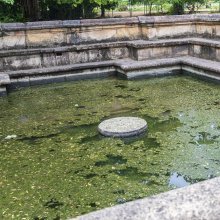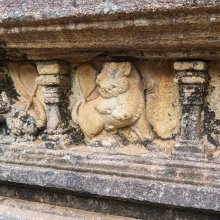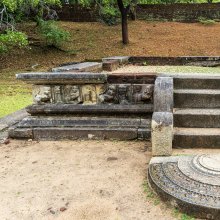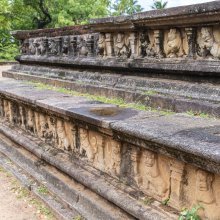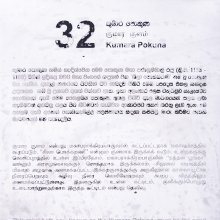Kumarapokuna, Kumārapokuṇa, Kumara-pokuna: 1 definition
Introduction:
Kumarapokuna means something in the history of ancient India. If you want to know the exact meaning, history, etymology or English translation of this term then check out the descriptions on this page. Add your comment or reference to a book if you want to contribute to this summary article.
Images (photo gallery)
India history and geography
Source: archive.org: Ceylon Branch of the Royal Asiatic Society 1963Kumārapokuṇa is the name of a pond that corresponds with Silāpokkharaṇī and existed within Citadel (royal enclosing) of Polonnaruva (Polonnaruwa), Ceylon (Sri Lanka).—On ground adjoining the Royal Enclosure, Parakkamabāhu laid out the Nandana Park in which were many varieties of fruit and flowering trees and the following structures:—(i) A Bath House with shower-baths and a (?) fountain; (ii) a Pavilion with pillars of sandalwood, containing an octagonal maṇḍapa resembling an ear-ornament; (iii) a maṇḍapa which had “the charm of a wreath of serpentine wanderings”; (iv) the Silāpokkharaṇī, now called Kumārapokuṇa; (v) the Nandāpokkharaṇī; (vi) a Pond holding perfumed water; (vii) the Vasanta cave; (viii) the Maṅgalapokkharaṇī. Later, the Nandana Park was extended, re-named Lakkhuyyāna and made over to the Saṅgha: two ponds below hollow rocks were constructed for the monks to bathe in.

The history of India traces the identification of countries, villages, towns and other regions of India, as well as mythology, zoology, royal dynasties, rulers, tribes, local festivities and traditions and regional languages. Ancient India enjoyed religious freedom and encourages the path of Dharma, a concept common to Buddhism, Hinduism, and Jainism.
See also (Relevant definitions)
Partial matches: Pokuna, Kumara.
Full-text: Nandana, Nandapokkharani, Lakkhuyyana, Mangalapokkharani, Vasanta, Silapokkharani.
Relevant text
No search results for Kumarapokuna, Kumārapokuṇa, Kumara-pokuna, Kumāra-pokuṇa; (plurals include: Kumarapokunas, Kumārapokuṇas, pokunas, pokuṇas) in any book or story.
